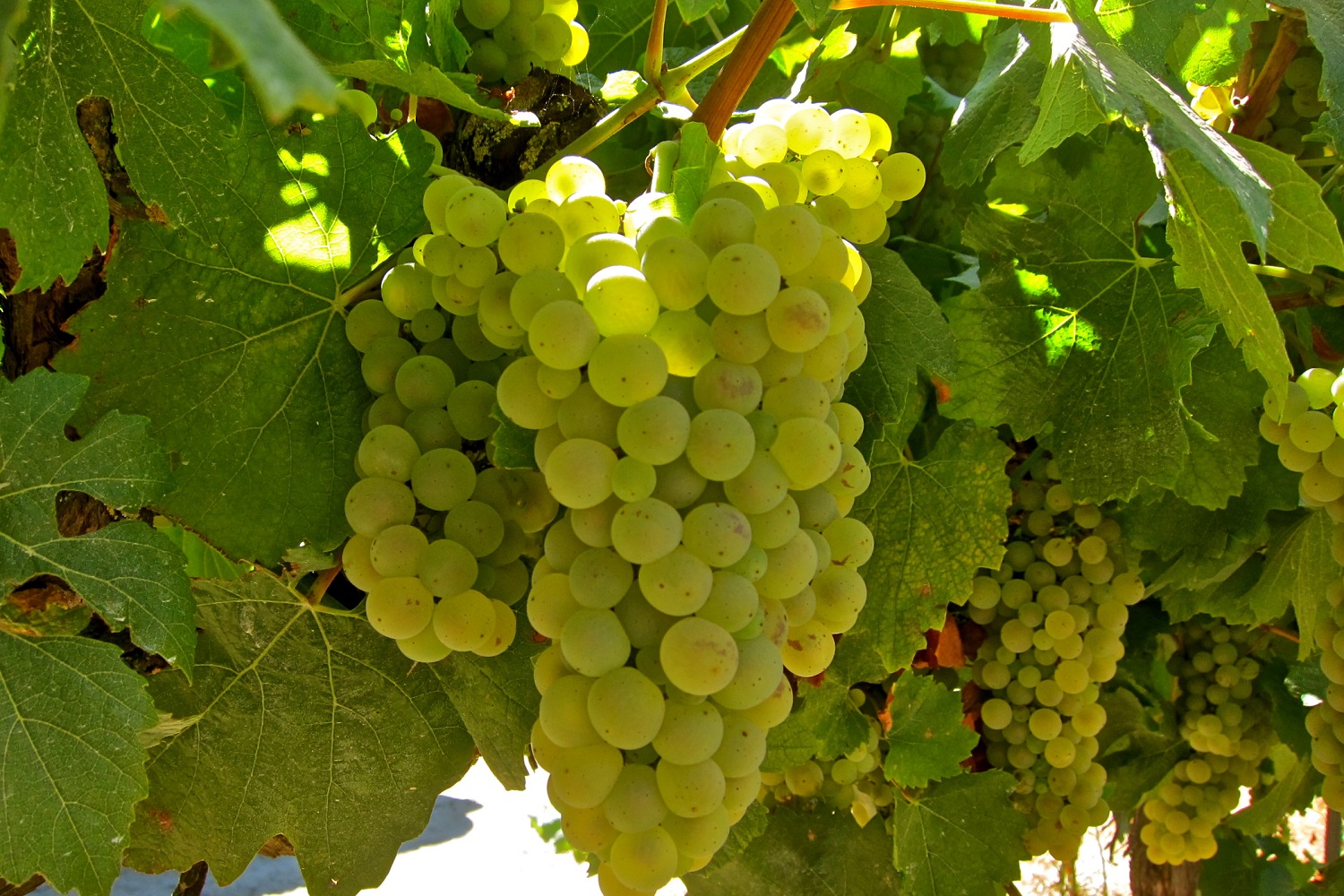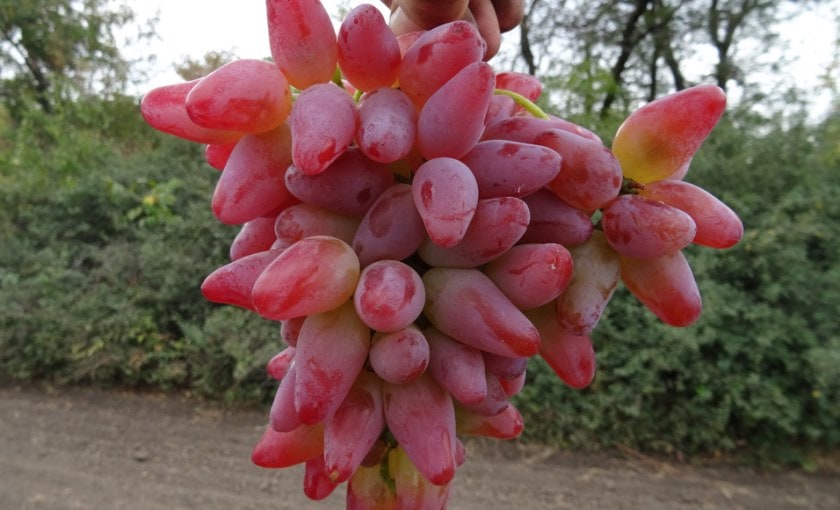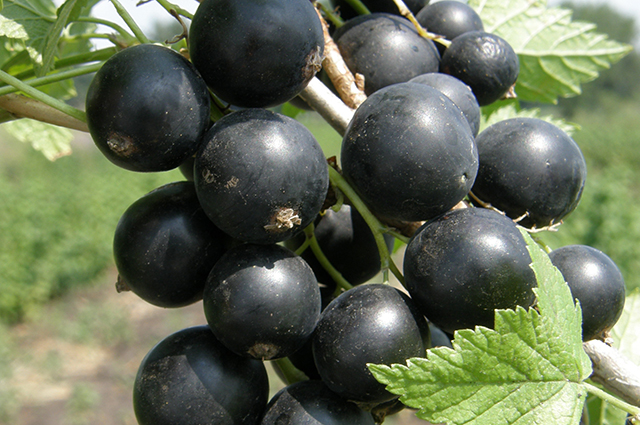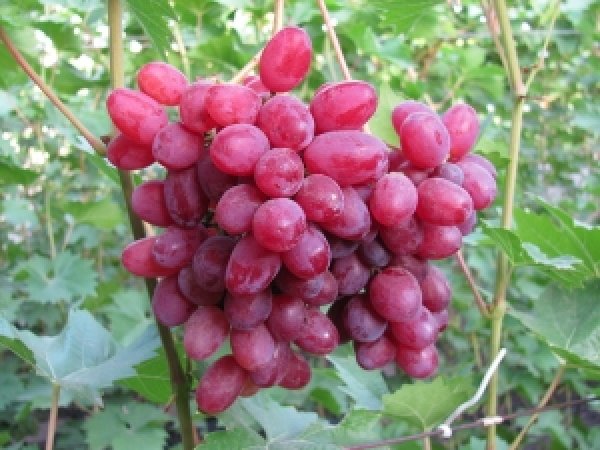Content:
Two berries, the most beloved by the population of the planet, through the efforts of breeders, have combined into one delicious aromatic hybrid. Ezhemalina (the so-called garden culture) has an average taste with a characteristic pleasant sourness. Among the advantages of the species, an unusual large berry can be distinguished.
General characteristics of the hybrid
Not everyone knows what it is. Therefore, it is so important to study the peculiarities of the culture, the rules of breeding and care, in order to then give yourself the pleasure of enjoying the spicy taste of unusual fruits.
The first to become known was the Loganberry, which appeared due to the accidental crossing of two bushes growing side by side in the garden of a California judge. Scientists did not ignore this story, and their subsequent experiments gave impetus to breeders to create a completely new berry culture.
The description of the variety of Yezhemalin Loganberry can be represented by the following characteristics:
- the bush bears large fruits and is famous for large yields;
- the culture is unpretentious to care;
- gives rather long shoots compared to prototypes;
- raspberry blackberries are more resistant to frost;
- fruits have absorbed all the useful properties of related cultures.
All other plant features (direction of branch growth, number of replacement shoots, weight and color of fruits) are relative and each variety has its own.
True, raspberries transmitted their diseases to the culture, but the Loganberry blackberry has a higher immunity. The taste of the berries is slightly inferior to their predecessors, but this is more than offset by the rest of the advantages.
Yield
Blackberry raspberries bloom in the first half of May, and in mid-June you can harvest. The fruiting period itself stretches for an average of a month. The number of berries taken directly depends on the age of the bush - everything is increasing.
Starting from the second year after planting, few fruits appear on the plant, they are not as large as the gardener expected. But every year their number on the branches increases, and they are actively gaining mass. From a three-year-old bush, it will already be possible to take on average 5-6 kg and at least 12 tons per hectare.
Planting a plant
Blackberries and raspberries are related crops, so the rules of agricultural technology are similar. The same goes for the hybrid. But beginners in gardening still need to pay attention to the question of how to plant ezhemalin in the spring. Although some people prefer to do this in the fall, this option is only suitable for the southern regions.
Despite the unpretentiousness of the yogurt planting and caring for it should be carried out in accordance with all the rules. First of all, you should pay attention to the roots of the seedlings. It is desirable that they be with an earthen lump. If the system is open, then the rhizomes should not be dry and painful. If the sprouts already have vegetative buds, they try not to damage them when planting.
For ezemalina, you should choose a spacious sunny area - in tightness and shade, the plants will give a weak harvest. Breaking the berry, they choose an ordinary planting method. Moreover, for each bush you need a square hole 40 cm wide and with the same depth.The seedlings are placed at a distance of a meter from each other, maintaining row spacing of one and a half to two meters, so that in the future the adult bush does not interfere with the neighboring ones.
A few weeks before planting, the holes are prepared. The earth extracted from them is mixed with humus (not manure or droppings!), And half of this mixture is returned to the pits. Having lowered the seedlings into the recess, sprinkle the plant with the remaining earth, tamp it well, water it and mulch it. Here you can already use mullein, sawdust with ash and even weeds.
Care
Having understood how to plant ezhemalin, they study the peculiarities of caring for the crop. New technologies are not required here - all the work is already familiar to summer residents.
Watering
In terms of moisture content, this crop is not as demanding as raspberries, but the plant will have to be irrigated periodically. The first watering is carried out immediately after planting the seedlings. A water procedure is required a couple of days after circumcision. If the summer is hot and without rain, then it is advisable to moisten the earth during the ripening of the berries.
Top dressing
In the first year, the plants should not be saturated with fertilizers - for rooting, the humus that was introduced during planting will suffice for them. In the future, the bushes are fed every 2-3 years. For this, manure and phosphorus-potassium fertilizers are used. Their number per bush is selected taking into account the fertility of the soil.
Bush formation
You need to pay special attention to pruning ezhemalina - the entire crop depends on it. The main work is carried out after the end of the fruiting period or in the fall, but long before the onset of severe frosts. Old, broken, diseased shoots and excess growth are removed.
Spring sanitization of the bushes will also be required. Remove those that have not endured the winter well. From the rest, several high-quality branches are chosen that will participate in fruiting, and the rest must be cut off.
Trellis
Any variety of ezhemalina grows long stems. Some of them will grow straight, while others will spread like a blackberry, so you cannot do without reliable support here. The garter will help the bushes develop better and give ultraviolet access to the berries.
Since the fruits are large, and there are many of them on the branches, the stems cannot withstand such a load. Therefore, the trellis must be powerful enough. For support, use either metal posts or strong thick beams with a height of at least 2.5 m.
You will need a strong nylon line or thick wire, which is pulled evenly in 5 rows. On the upper tiers, the fruiting plants are fixed, tying them with a snake, on the lower tiers - replacement stems.
Preparing for winter
The resistance of the hybrid to frost depends on the variety, but in the middle lane and northern regions you cannot do without shelter. To begin with, the plants must be pruned, completely removing the sprouted shoots.
The remaining branches under the weight of snow can break off, so it is recommended to bend them to the ground, carefully removing them from the trellises with your hands. For convenience, the tops of the stems are first bent, securing them to the ground with a small weight. Then the entire shoot is gently lowered.
The laid branches are covered with shavings, sawdust, straw, spruce paws. If necessary, use roofing material, spunbod or other similar material if a harsh winter is expected.
Reproduction of ezhemalina
It is better to propagate a hybrid culture in a vegetative way, since the use of seeds will not only stretch the process for a long period, but also will not allow preserving the varietal characteristics of the bush.
Below is a description of the features of how propagation by cuttings is carried out.
Cutting reproduction of Yezmalina
| Cuttings | Breeding features |
|---|---|
| Green | Billets are made in summer (usually in August), cutting off the tops by 30-35 cm. Immediately, they are laid horizontally in small trenches up to 20 cm deep and covered with earth. Next year, up to 4 small bushes can grow from one cutting, which need to be planted in new places. |
| Lignified | In autumn, shoots of the current year are selected as planting material, on which at least 4 buds have formed. These stems are cut and kept in a container with water for 24 hours. When planting cuttings in open ground, intervals of 5-10 cm are made between them. They are buried in the ground so that only 2 buds remain on the surface. If after watering the rest become bare, they are buried in earth. |
| Root | In the spring, digging up a bush, they get to the roots. Select those that have a thickness of at least 7 mm. They are cut off, and the bush is again buried in earth. The root is dissected into 15 cm cuttings and buried in the ground to a depth of about 20 cm |
Reproduction using cuttings allows you to have well-developed seedlings in a year. In this case, all the characteristics of the mother bush are transmitted to the children.
Diseases and pests
In caring for the ezemalina, do not forget about the health of the shrub. The hybrid inherited from raspberries a predisposition to diseases such as rust, powdery mildew, verticillosis, anthracnose, etc. Therefore, it is necessary to keep fungicides at hand.
Many modern varieties of ezhemalina easily cope with these diseases. So, the Loganberry blackberry has developed immunity to verticullosis and dew, and they affect the Boynsberry blackberry. The opposite is true for rust.
As for pests, such insects visit the berry garden: galitsa, crimson beetle, weevil. But knowing how to properly care for the ezmalina, this misfortune can be avoided.
Ezhemalina varieties
Despite the fact that the raspberry-blackberry hybrid appeared relatively recently, breeders have already bred a large number of crop varieties. Many of them immediately became popular with summer residents. Therefore, it is worth considering the best ones.
Ezhemalina varieties
| Name | Description |
|---|---|
| Boysenberry | Ezhemalina Boysenberry can be called a type of Loganberry, crossed with blackberries. The deep cherry berries reach 5 cm in length. They have a pleasant blackberry aroma and sweet taste. |
| Tayberry | Creeping shoots are densely covered with rich red berries, reaching 4 cm. The variety is appreciated by gardeners for its delicate taste and ability not to crumble for a long time, firmly holding on to the stalk. A variety of this variety is the unpretentious Buckingham ezhemalina, in which the berry is larger - up to 8 cm |
| Texas | The hybrid has taken root well in the Moscow region. Its semi-ripe fruits resemble raspberries, but larger (up to 4 cm). By the time of full ripening, the berry acquires a dark purple color and becomes richly sweet with a subtle sourness. |
| Darrow | This is a representative of an upright bush, reaching 3 meters in height. But not only for this reason, the plant needs a trellis - the branches are dotted with sweet scarlet-purple berries as much as possible. From one bush per season, you can take at least 10 kg |
| Silvan | This variety is in many ways similar to Tayberry, but gives 2 times more fruits. Silvanus belongs to an early culture. In this case, the harvest is stretched for a month and a half. Large (10-14 cm) tasty aromatic berries are collected in voluminous clusters |
| Cumberland | From a distance, the berry can be mistaken for a blackberry, thanks to its rich black color. But the bush itself is significantly different - it has arched thick shoots, covered with a thick waxy bloom and powerful thorns. Ezhemalina Cumberland is appreciated by gardeners for its disease resistance and lack of growth. Due to its high frost resistance, the variety has taken root well in the northern regions. |
| Medana | A fairly early variety, descended from Tiberi, - harvests can be harvested in June. Ezhemalina, whose berries reach 4 cm in length, has a sweet-candy taste. The variety is resistant to viral diseases and perfectly withstands heat. Requires serious shelter for the winter |
| Marion | It belongs to a commercial variety, but is also actively grown by private owners. It is the taste qualities of large Marion berries that serve as a standard for breeders, which they are equal to when creating new varieties. |
| Red Diamond | A feature of the bush is its ability not to creep over the site. The variety attracts gardeners with its berries - almost transparent shiny rubies, beautifully shimmering in the sun. The taste of the fruit is intense, somewhat reminiscent of a sweet cherry |
| Thornless | The Loganberry variety is distinguished by its stiffness. Raspberry-red cone-shaped large berries without a glossy coating have a pleasant taste and unusual aroma. Large fruits are collected in bunches of 6-8 pieces |
Any of the described varieties of yogurt is worth it to propagate a berry in the garden. But at the same time, it is necessary to take into account the regional characteristics of the culture, then it will take root well and will feel comfortable in the place chosen for it.
If the attention of novice gardeners is attracted by every single nut, care and cultivation will not be hard work. It is enough to adhere to the golden rules of the agrarian, and the garden culture will delight you with delicious aromatic berries every season. Having absorbed all the most useful from "relatives" into the composition of fruits, ezhemalina will become a good vitamin supplement to the diet.


















